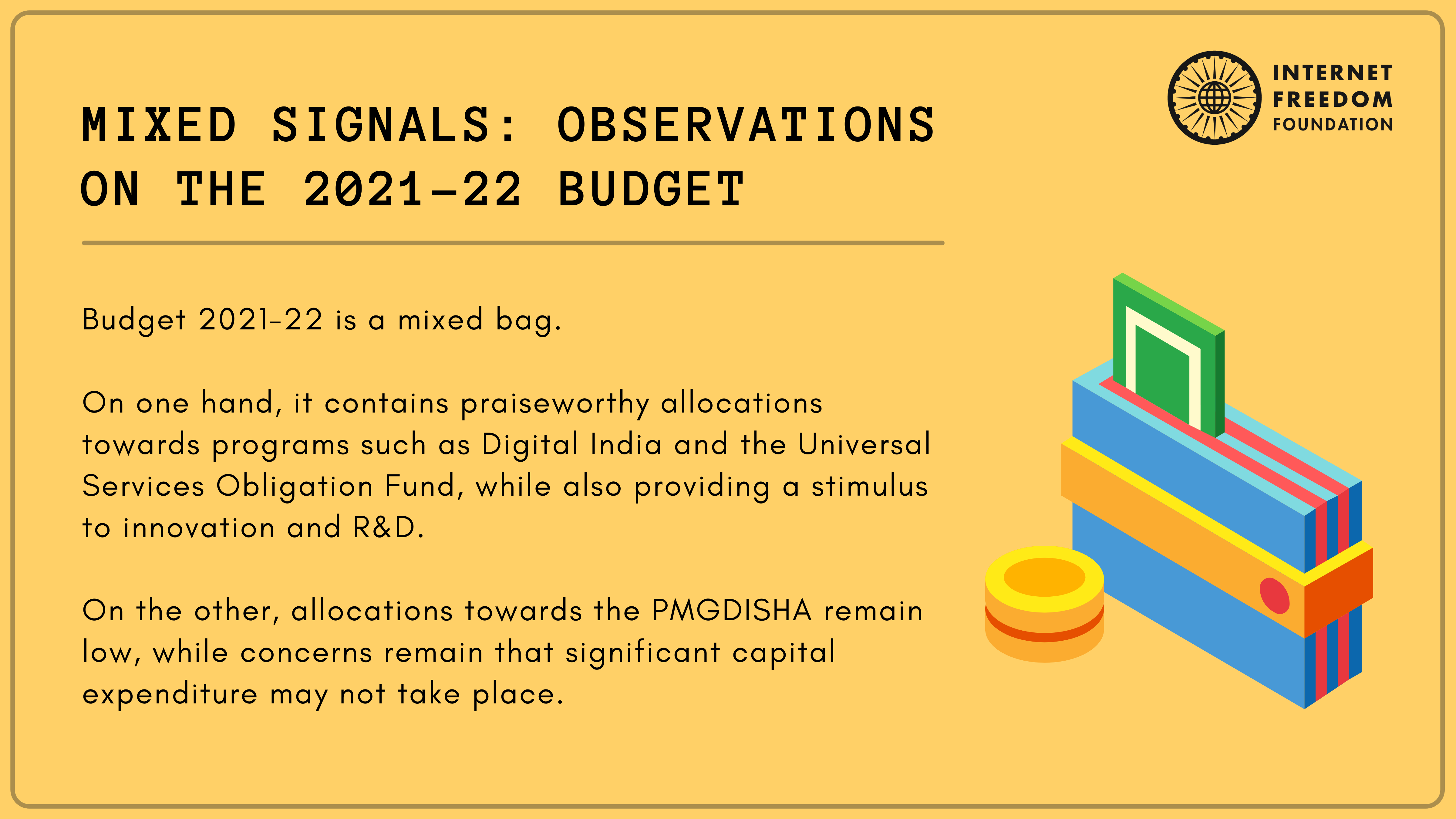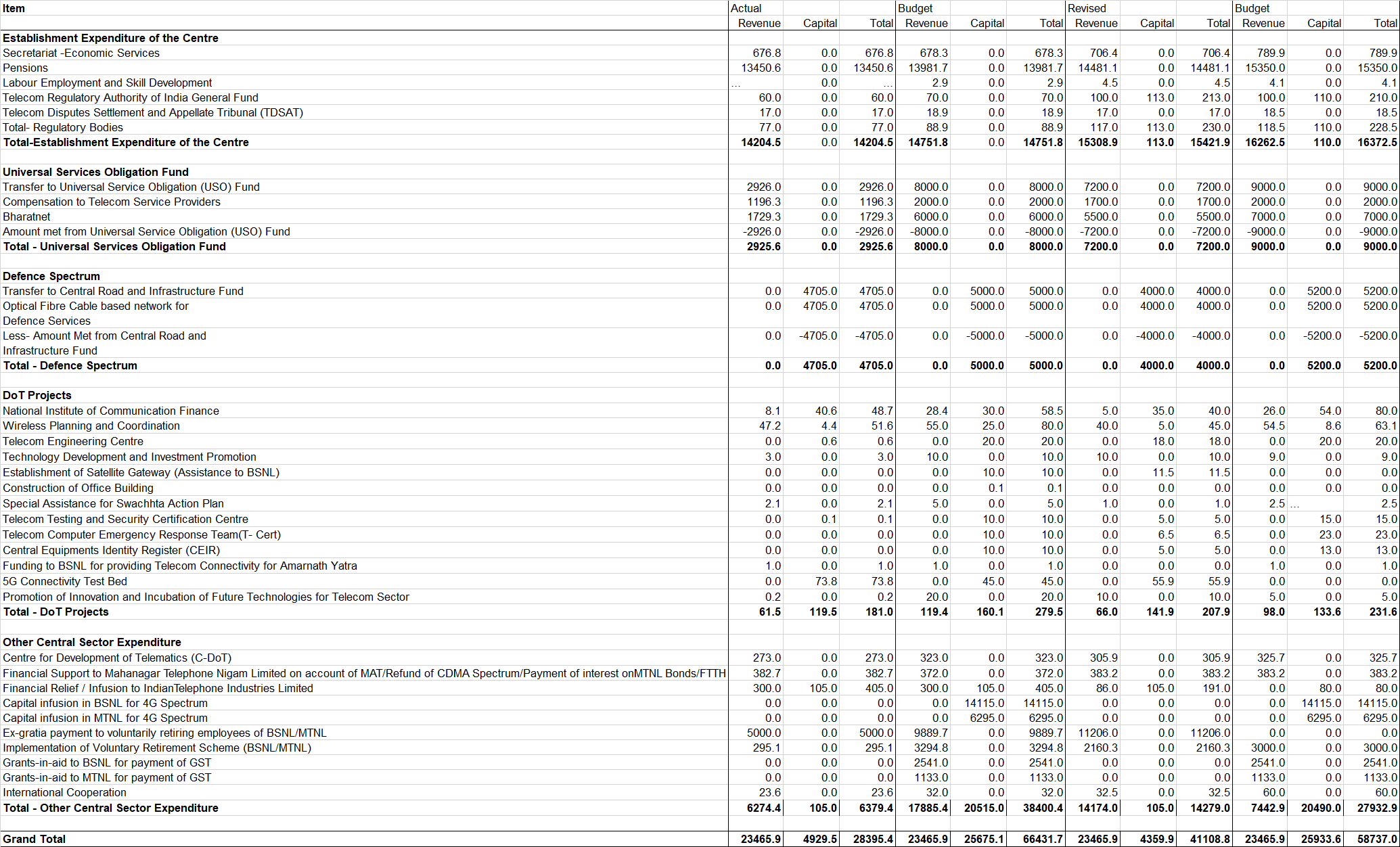Tl;dr
Budget 2021-22 is a mixed bag. On one hand, it contains eminently praiseworthy allocations towards programs such as Digital India and the Universal Services Obligation Fund while also providing a stimulus to innovation and R&D; on the other, allocations towards the PMGDISHA remain low, while concerns remain that significant capital expenditure may not take place.
A Broad Picture
Budget 2021-22 has cumulatively allotted Rs. 68,487.7 crore to the National Digital Health Mission, the Ministry of Electronics and Information Technology, and the Department of Telecommunications:
- For the Ministry of Electronics and Information Technology, this is a 75% increase over the Revised Estimates of 2020-21, which were a 2% decrease over the actual spending for 2019-20. The Revised Estimates were 19.6% less than the Budget Estimates in 2020-21.
- For the Department of Telecommunications, this is a 43% increase over the Revised Estimates of 2020-21, which were a 45% increase over the actual spending for 2019-20. The Revised Estimates were 38.1% less than the Budget Estimates in 2020-21.
- A huge 460% increased in total capital expenditure over the Revised Estimates of 2020-21 can be observed, stemming largely from a 495% increase from the Department of Telecommunications. However, praise for these allotments be be tinged with hint of caution, as the Revised Estimates of 2020-21 for capital expenditure in the Department were only 17% of the Budget Estimates of 2020-21. While it is possible that the lower spending is due to the COVID-19 pandemic, the actual spend on capital expenditure in 2019-20 was also at similarly low levels (Rs. 5,1961.1 crore) .
Budgetary allocations for selected items (Rs. cr)
The Ministry of Electronics and Information Technology
The Ministry of Electronics and Information Technology witnessed a huge boost in allocations, with Rs. 9,720.7 crore being allocated to it in the Budget. This is mostly due to an increase in the allocation to the Digital India Program, which received Rs 6,806.3 crore and whose share in the total allocation increased from 55% in the 2020-21 Revised Estimates to 70% in the 2021-22 Budget Estimates. This itself stems from an increased focus on domestic manufacturing, as shown by the increased allocation of Rs. 2,631.3 crore towards the Promotion of Electronics and IT HW Manufacturing.
Breakdown of allocation for MEITY
There has also been an increased impetus for innovation and digital technology. Rs. 150 crore has been allocated towards the promotion of IT/ITeS industries, which are a 50% increase over the 2020-21 Revised Estimates. Meanwhile, Rs. 200 crore has been allocated towards the Centre for Development of Advanced Computing, which is a 58% increase over the 2020-21 Revised Estimates. In general, an increasing trend can be seen in terms of allocations towards innovation.
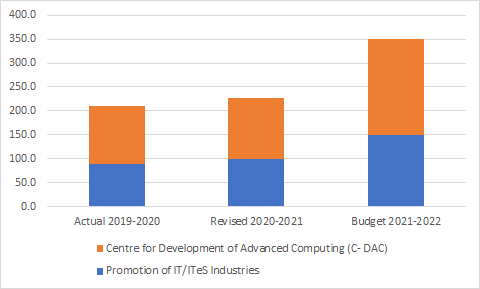
Allocations towards innovation and technology
While these increased allocations are welcomed, it must be noted with some consternation that the allocations for Pradhan Mantri Gramin Digital Saksharta Abhiyan (PMGDISHA) are relatviely subdued. Furthermore, even though the increased allocation in the 2021-22 Budget Estimates are a 20% increase over the 2020-21 Revised Estimates, the Revised Estimates themselves were only 60% of the 2020-21 Budget Estimates. In an increasingly digitalised economy, given the Centre’s push towards digitalisation, a digital literacy training scheme like PMGDISHA is crucial for ensuring that rural citizens stake their claim to the fruits of the fourth industrial revolution and truly become a part of modern India.

Pradhan Mantri Gramin Digital Saksharta Abhiyan (PMGDISHA)
Additionally, capital expenditure has failed to keep pace with revenue expenditure, with the allocation for the former witnessing ‘only’ a 26% increase over the Revised Estimates of 2020-21. The share of capital expenditure, already at a low level, decreased to 4.6%.
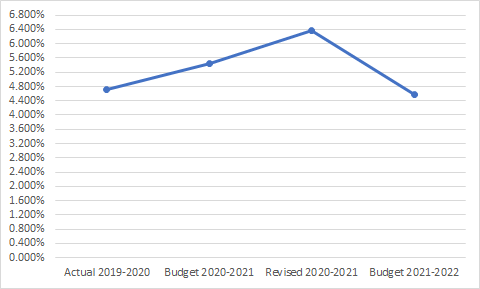
Share of Capital Expenditure in Total Expenditure
The Department of Telecommunications
Breakdown of allcoation for DoT
The Department of Telecommunications was allocated Rs 58,737 crore in the Budget, a substantial increase of 43% over the 2020-21 Revised Estimates. This is largely due to a large increase in support to Public Sector Undertakings. Both BSNL and MTNL were provided with capital infusions for providing 4G services and grants-in-aid for the payment of GST, with the PSUs receiving Rs. 16,656 crore and 7,428 crore respectively. It is likely, however, that this may be due the COVID-19 pandemic reducing expenditure and thus causing the payments under the VRS schemes of BSNL and MTNL to be pushed forward to 2021-22.
The Universal Services Obligation Fund (USOF) also witnessed a considerable increased in allocation, which can only be commended. The net allocation to the USOF increased to 9,000 crore, a 25% increase over the 2020-21 Revised Estimates. The latter was itself 90% of the 2020-21 Budget Estimates, indicating a high level of utilisation.
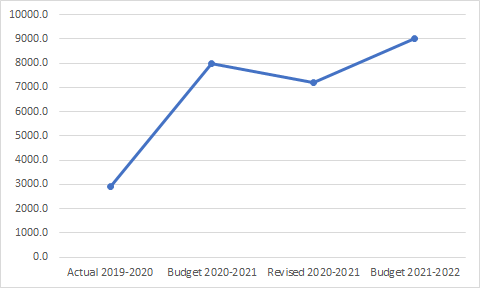
Net USOF allocation
The USOF is a key component of the project to build India’s digital infrastructure. Its function is to extend telecom network infrastructure and stimulate an uptake in the usage of ICT services in rural and remote areas, where higher capital costs may prohibit market players from establishing themselves. Thus, it serves to bring internet access to marginalised communities, and so the increased allocation towards the Fund will play a vital role in boosting internet usage.
A large component of the increased allocation is due to the higher allocations for BharatNet. BharatNet is a governmental telecom infrastructure provider that aims to provide an Optical Fiber Network in each gram panchayat in the country, and so the increase allocation Rs 7,000 crore (a 27% increase over the 2020-21 Revised Estimates) is greatly welcomed.
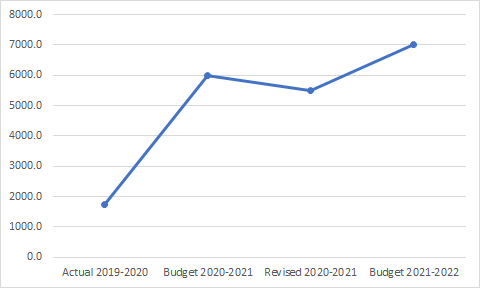
Allocation towards BharatNet
